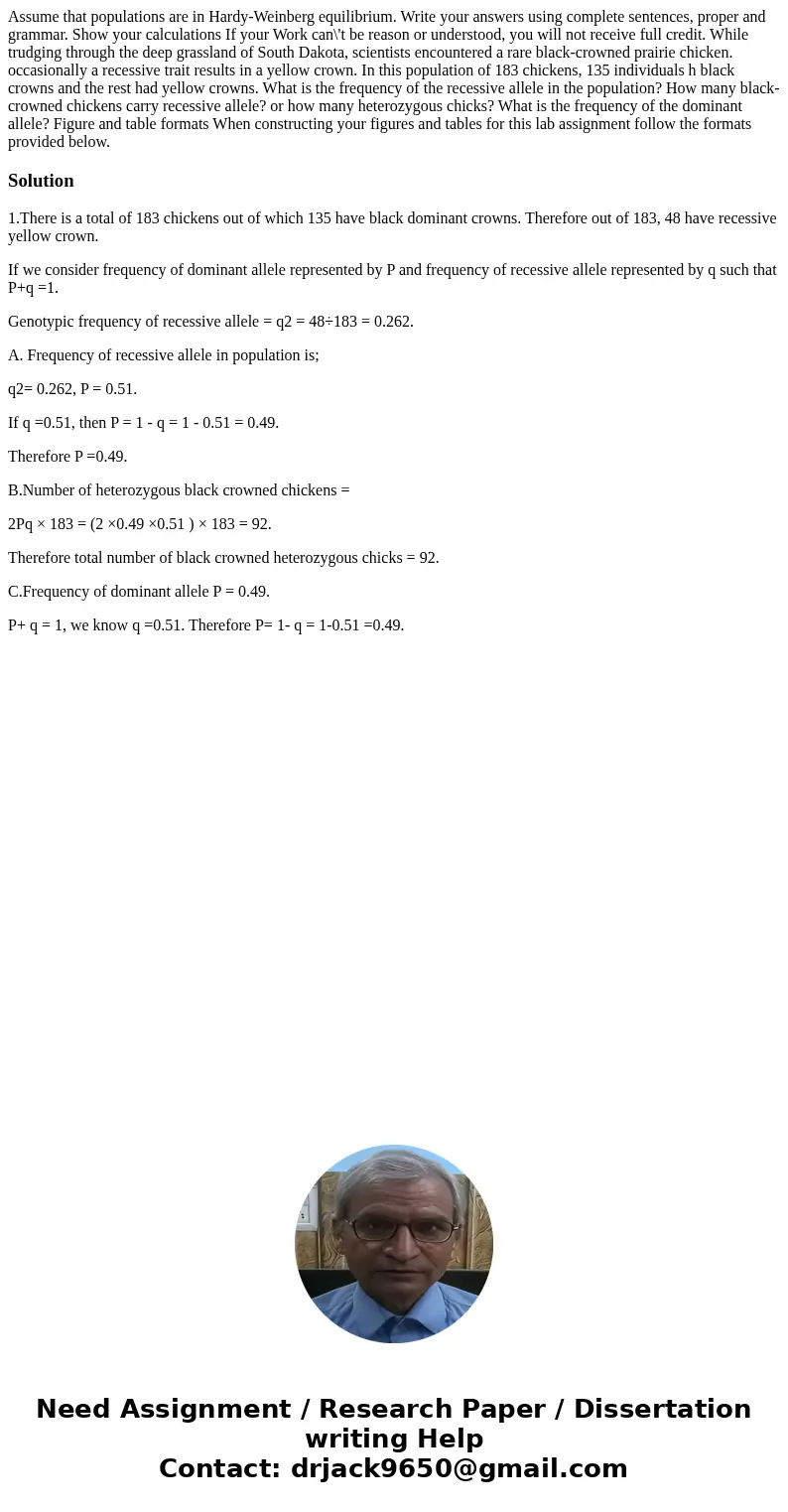Assume that populations are in HardyWeinberg equilibrium Wri
Assume that populations are in Hardy-Weinberg equilibrium. Write your answers using complete sentences, proper and grammar. Show your calculations If your Work can\'t be reason or understood, you will not receive full credit. While trudging through the deep grassland of South Dakota, scientists encountered a rare black-crowned prairie chicken. occasionally a recessive trait results in a yellow crown. In this population of 183 chickens, 135 individuals h black crowns and the rest had yellow crowns. What is the frequency of the recessive allele in the population? How many black-crowned chickens carry recessive allele? or how many heterozygous chicks? What is the frequency of the dominant allele? Figure and table formats When constructing your figures and tables for this lab assignment follow the formats provided below.
Solution
1.There is a total of 183 chickens out of which 135 have black dominant crowns. Therefore out of 183, 48 have recessive yellow crown.
If we consider frequency of dominant allele represented by P and frequency of recessive allele represented by q such that P+q =1.
Genotypic frequency of recessive allele = q2 = 48÷183 = 0.262.
A. Frequency of recessive allele in population is;
q2= 0.262, P = 0.51.
If q =0.51, then P = 1 - q = 1 - 0.51 = 0.49.
Therefore P =0.49.
B.Number of heterozygous black crowned chickens =
2Pq × 183 = (2 ×0.49 ×0.51 ) × 183 = 92.
Therefore total number of black crowned heterozygous chicks = 92.
C.Frequency of dominant allele P = 0.49.
P+ q = 1, we know q =0.51. Therefore P= 1- q = 1-0.51 =0.49.

 Homework Sourse
Homework Sourse